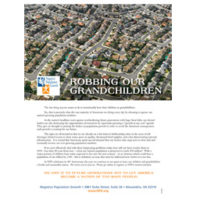The Southwest: Ground-Zero for Global Warming
- Kathleene Parker
- August 1, 2012
- Forum Papers
- Forum Paper
- 0 Comments
Click here for a downloadable, printable PDF version
Experts warn that the American Southwest will be the part of the nation hit first, worst and hardest by global warming. But the desert Southwest— what author Wallace Stegner called “the dry core of the West”—could face a civilization-breaking water crisis even without global warming. There is insufficient water for the current population, much less a population that might well double by mid-century or shortly thereafter, if recent trends hold.[/box]
There is no acknowledgement or discussion of population—regionally or nationally—even though the Southwest is the fastest growing area of this the world’s third most populated nation, behind only China and India.1 Half of all growth globally in recent years occurred in just eight nations: India, Pakistan, Nigeria, China, the United States, Bangladesh, Ethiopia and the Democratic Republic of Congo, in that order. 2 We are by many definitions a population supergiant, yet refuse to openly acknowledge that fact or its carrying-capacity implications.
While growth has slowed to .9 percent with the recession3, the nation until recently grew by 1.1 percent a year, wrongly touted as a low growth rate but representing population doubling times of 65 years or less. (The .9 percent rate represents doublings of about 71 years.) Immigration (immigrants and births to recent immigrants) fueled 82 percent of growth between 2000 and 2010 and could add another 100 million people in 50 years unless immigration—legal and illegal— is quickly returned to lower norms.4
The Southwest, post-1900, changed from one of the most sparsely populated regions in the world to one holding over 45 million people and the nation’s second largest city (Los Angeles). Post 1950, the region saw growth at between 2 percent and 3 percent a year—rates more typical of population-crisis spots in Africa—and representing population doubling times of only 35-to-23) years.5
The United States—with a population of a mere 100 million in 1915, 200 million in 1967— reached a hallmark 300 million in 2006, but just six years later we approach 314 million, with 438 million likely by 2050.6 Even if the Southwest receives only one-third of that l38 million increase over 2006 numbers, it would double its current population.
In the Southwest, warnings about water shortages are ignored by leaders and boom- boosters, increasingly indistinguishable from one another. This spring, for example, the groundbreaking on a 37,000-home development in drought-seared Albuquerque was greeted with no discussion about a worsening drought.
- Immigration Reduction: Xenophobia and Racism? Or, Common Sense and Pragmatism in a Crowded Nation? - September 12, 2023
- Modern Megadrought: Population, Denial, and Crisis in the American Southwest - February 6, 2023
- Why Population Really Disappeared from the News and Became Politically Incorrect! - September 22, 2020

